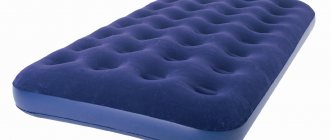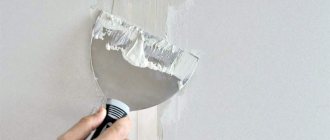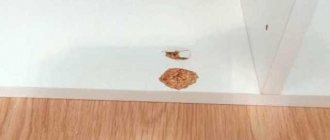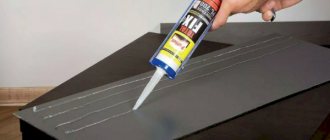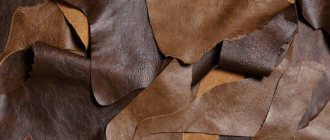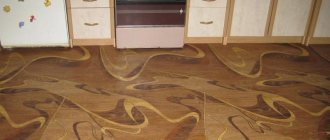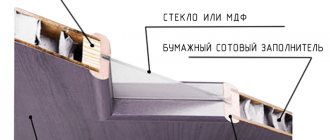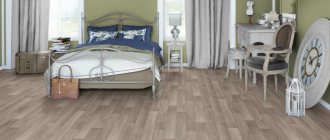During use, linoleum may experience tears, abrasions, and scratches, causing the floor to have a sloppy appearance. Complete replacement of the coating is not always advisable, especially if the damage is single and small, so you need to look for another solution to the problem. There are several simple ways to repair a hole in linoleum without visible marks and at minimal cost, which practical owners will definitely appreciate.
How to repair a hole in linoleum
So, let's look at the reasons for the appearance of holes and other common defects in the flooring, as well as options for eliminating them.
What to do if linoleum is torn
PVC flooring and natural roll coverings have gained popularity due to their good decorative qualities and sufficient resistance to compression and abrasion loads. But if serious violations were made during installation, then during use the likelihood of damage increases.
In addition, in most cases, the cause of negative situations with flooring is the wrong choice. Buyers, in order to save money, give their preference to budget materials - household or semi-commercial linoleum of the 21-23 series and 31 wear resistance class. A high level of resistance to abrasion is observed in natural and PVC linoleum. There are products that are not afraid of sharp heels, pet claws, or furniture casters.
Damaged linoleum not only spoils the appearance of the floor, but also becomes a place for the development of pathogenic microorganisms
If, for example, linoleum of the wrong load class, marked 21, was purchased for the floor in the hallway or kitchen, then it will soon become unusable due to intensive use. Similar consequences will occur when using linoleum of wear resistance class 21-22 in educational institutions. This is a material for household use, it has a minimal protective coating. Here it is best to use linoleum of class 31 and higher for flooring.
Often, when consumers experience damage to linoleum, roll covering manufacturers are to blame for the fact that their products are not of high quality. In addition to choosing the right flooring material, you should also adhere to the technology of its installation.
Among the positive characteristics of linoleum is its partial repairability. If there is a small defect in the form of a cut or swelling, you can beautifully seal the hole in the linoleum by using appropriate means.
Important! If you do not carry out repair work to eliminate various types of damage to the linoleum, then over time they will increase in size and become a place for accumulation of debris and dirt. In such conditions, fungi will begin to multiply at a rapid speed, and it is unlikely that it will be possible to fix torn linoleum without visible consequences.
Causes of defects
Many people mistakenly believe that due to its high elasticity, linoleum will fit perfectly even on an uneven base that has not been prepared beforehand. But the material will not lie on the holes. Of course, such depressions will be disguised, but linoleum will not be able to fill them. As a result, with minor mechanical stress, the material can be perforated.
Repair of linoleum is carried out depending on the nature of the damage
Laying PVC material on a damp base will cause it to swell. A similar result is also possible when using low-quality glue or a too thin layer of mastic. In such cases, some time after the glue dries, the linoleum will begin to peel off. Peeling can occur hours or months after installation.
Blistering of linoleum
Careless handling of the floor covering can also lead to various types of damage, such as cuts or tears. If the installation technology is incorrect, linoleum seams may delaminate. All possible defects negatively affect the appearance of the apartment and the floor in particular.
Green stains on linoleum
How to fill a hole in linoleum floor
To restore flooring with large holes, you will need pieces of similar material of suitable sizes. When purchasing, consultants often recommend purchasing linoleum for the floor with a reserve. To fix the patch or join the separated sheets, you need to prepare double-sided or regular tape or glue.
Adhesive double-sided fabric-based tape will help with floor restoration
To repair roll coverings, special adhesive compositions are used:
- Bustilat Universal. This adhesive is suitable for repairing damage to PVC linoleum made on both fabric and felt backing. You can work with it if the floor is wooden, concrete, or plywood.
- PVA glue. This composition can be used equally effectively to close holes in linoleum, regardless of the presence of a base. It is also used for plank floors, screeds, chipboard sheets, and fiberboard.
- Homakoll 208. This type of adhesive composition is intended for repairing all PVC coatings; their base can be absolutely anything: fabric, foam, pile. It is also used for wooden floors, concrete screeds, fiberboard, plywood sheets, and fiberboard.
- Adesilex. This is a two-component epoxy-polyurethane composition for rubber, PVC coating, and natural linoleum. The base can be either absorbent or non-absorbent. Use glue in rooms with excessive air humidity.
- Homacol. This colorless composition belongs to a variety of cold welding. It is designed to ensure the tightness of the connection of polyvinyl chloride sheets. Khomakol is especially relevant for removing small holes from linoleum, as well as cuts and punctures.
In order to discreetly restore the floor covering from minor scratches, punctures, and burn marks, it is recommended to use a polymer version of putty based on artificial materials - latex and acrylic. Mastic is also suitable for these purposes.
Advice! To match the color of the repair composition to the floor covering, you need to add small particles scraped from the linoleum to it. You can also purchase a ready-made product made from mastic, a colored component and a solvent for repairing roll coating.
Features of polymer flooring material
Linoleum is a popular polymer roll covering for flooring in a private house, apartment or office. This material is also in great demand for laying floors in industrial premises, warehouses and workshops.
Positive traits
The popularity of using polymer flooring is due to a number of its advantages:
- sufficient density;
- good flexibility;
- waterproof;
- large selection of structures and colors;
- affordable price;
- ease of working with the material.
Coating characteristics
Variety of coating texture
Polymer roll flooring is produced in rolls that have a width from half a meter to 5.0 meters and a length from 6.0 to 45.0 meters. The thickness of such a coating is 1.50 – 5.0 mm, and for laying floors in industrial and sports facilities, the thickness increases to 9.0 mm.
Laying on the floor
The industry produces a coating that has a heat and sound insulating base, so it can be laid directly on a concrete screed without special surface preparation. The base must be level and dry. Laying of the coating is carried out using special glue or polymer mastic.
Tools for repairing linoleum
To restore torn linoleum, you will need the following set of tools and materials:
- The remaining fragments of flooring after laying it on the floor. If they are not available, you will have to select a material in the store that matches the color and structure. In specialized retail outlets there are small rolls - leftovers.
- A tool with a well-sharpened cutting element, a construction knife or cutter is suitable. Also, the blade must be sufficiently rigid, otherwise it will not be possible to cut the multilayer material.
- To mark a right angle, use a metal or wooden square (construction square).
- Adhesive composition in the form of bitumen mastic, putty, liquid nails.
- Rubber spatula.
- Roller for painting work.
- Glue syringe.
- Construction hair dryer to heat the floor covering.
- A small piece of plywood or suitable material for leveling the surface.
- A heavy object for better gluing of torn linoleum (oppression).
Hot welding
The seams created in this way are durable
As is already clear from the name, the connection of two parts of the floor covering in this case occurs by heating them. This method is used mostly when laying linoleum in public buildings or rooms with high traffic.
Due to the fact that the connection occurs at high temperatures, the seams are strong enough and can withstand significant external loads.
Also in this case, the joints are sealed, which allows the floor covering to be used as a waterproofing material.
Among the disadvantages of this method, one can note the fact that only rigid modifications of linoleum that can withstand higher temperatures can be hot welded.
The table shows the classes of coatings recommended for hot welding and their brief description.
Before you start hot welding, you should practice well on unnecessary scraps of linoleum.
Tools and materials
To weld two pieces of decorative flooring, we will need the following materials and tools:
- hot air gun (soldering iron);
- sharp knife;
- cord (harness) for filling the seam.
If you don’t have a hot air gun on hand, you can use a regular soldering iron. However, in this case, it should be borne in mind that it is unlikely that it will be possible to achieve a high-quality joint using a soldering iron.
Instead of a knife for cutting linoleum, you can use scissors with curved blades. They can be useful when removing excess weld material. The cord is made of a material similar to that from which linoleum is made.
This technology allows you to firmly connect two pieces of linoleum, practically obtaining a monolithic structure.
Stages of work
We lay the two canvases not overlapping, as with the cold method, but butt to each other. Using a knife, remove the upper edges of the edges of the linoleum at the joints so that the connecting seam has the shape of the letter “V”. For a detailed description of the process, watch this video:
We clean the resulting groove from dust and debris, and place the welding tow in it. If the length of the harness is not enough for the entire joint, you can take several pieces, and their joint should be overlapped.
After the welding seam has cooled, use a knife to remove excess melt from the welding cord. Linoleum welded in this way is so durable that it can be regarded as a single, monolithic coating.
For greater effect, linoleum sheets should be placed across the illuminated window. In this case, the sun's rays falling along the joints will make them even more invisible.
How to repair torn linoleum
In order for repairing linoleum with a hole with your own hands to have a positive result, the damage remaining almost unnoticeable, it is necessary to select an appropriate approach to each type of defect. Depending on the type of damage, certain means and recovery technologies are used.
How to repair a small hole in linoleum
To glue torn linoleum at home, if the size of the spot area does not exceed 1 square. cm, you need to use an adhesive mixture. Suitable for eliminating minor mechanical damage:
- Sealants designed for working with wooden surfaces. They are able to remove defects and minor abrasions.
- Mastics. There is a huge range of shades on the market, so choosing the most similar option for a specific coating will not be difficult.
- Cold welding based on polyvinyl chloride. It can be safely used to remove tears up to 2 mm thick.
- Nail polish. It is used as a finishing layer.
The algorithm for restoration work on linoleum involves the following actions:
- Clean the damaged area from debris and dust.
- Choose a color shade similar to the material. Add to the repair composition and mix thoroughly until the desired shade is obtained.
- Fill the damage on the linoleum with this mixture, leveling and removing excess.
A homemade mixture prepared according to the following scheme works effectively to seal small defects on the floor covering:
- Powdered rosin in an amount of 0.5 kg must first be melted in a porcelain container over water steam.
- Then cool to a temperature of 50 degrees and combine with alcohol (150 g), castor oil (100 g).
- Add suitable pigment following manufacturer's instructions. The shade should be as close as possible to the specific type of linoleum.
One thing to keep in mind when using this mixture is that once it dries completely, the color will become a little paler. If possible, it should be tried on a similar substrate before applying to the damaged area.
How to fix a hole in linoleum with a patch
If the linoleum is torn, it can be repaired with a patch. It is glued either over the entire area or only around the perimeter.
The technology for carrying out repair work involves:
- Clean the surface of the coating from dirt and dust particles. Take a piece of linoleum cut to the size of the damaged area and lay it so that the lines of the pattern coincide.
- Secure the covering with tape.
- Place the patch aside and remove the damaged piece that was cut out.
- Once again, apply the patch to the area being repaired, make sure that the joints are tight and compatible with the main pattern. After this, apply the mastic to the base using a fine-toothed spatula.
- Place the patch on the area to be treated and smooth it with your hands, pressing well along the edges. For the best effect, use a roller, rolling it in all directions.
- Fill the seams using cold welding.
To avoid displacement or deformation, you should not step on the patch or touch it until the glue dries. To make a better repair, it is recommended to put plywood on it and press it down with a weight for several days. Under such pressure, the patch will stick faster and better, the seams will be unnoticeable.
How to fix a hole in linoleum without a patch
This method of eliminating holes without using patches is used if a fragment of the coating hangs as a flap, but is not completely torn out. To reduce the consequences of obvious damage, it is necessary to straighten the torn piece. You can try it with something very heavy, leaving the material under pressure for a day. Alternatively, you can use an iron, ironing the damaged area through gauze, folding it into 10-15 layers. Damage to linoleum should be repaired only after it has been completely straightened.
Instructions for restoring linoleum without patches:
- Clean the floor from dirt under the gap.
- Using a gun, apply adhesive (liquid nails) around the entire perimeter of the problem area.
- Place the damaged part on the glue and press well with your hand. Roll out in all directions with a roller.
- Remove excess glue with a damp cloth.
To ensure complete drying, it is not recommended to walk on freshly glued linoleum; this area of the floor should be fenced off. Not only liquid nails are used in this case; mastic and glue for roll coatings are also suitable.
How to repair a cut on linoleum
To repair a cut on linoleum, as well as broken seams between sheets, you must adhere to the following recommendations:
- Clean the base under the edges of the canvas from accumulated debris and dirt.
- Prime and dry the problem area.
- Place double-sided tape in the gap, from the beginning to the end of the cut.
- Remove the protective film and press the edges of the floor covering. Smooth them out with a roller.
There are situations when, after repairs, gaps of 1-2 mm remain between the edges of the linoleum. They can be eliminated using A-type cold welding. With this approach, the cuts in the floor covering will be almost invisible.
Bonding with mastic
Mastic is one of the most popular adhesives. It makes it easy to glue linoleum at home. The method is reliable, it connects “tightly”, but if you need to remove the coating for a while, then the linoleum will tear in the place where the mastic was used. It is also easy to attach the raised piece this way.
Work order:
- Before gluing the joints, prime the base.
- The edges of the coating are degreased with any alcohol-containing product. Acetone or solvents cannot be used, as they can corrode the linoleum.
- As soon as the base has dried, you need to apply a small amount of mastic to it with a spatula.
- Then the edges of the linoleum are applied to the surface and pressed tightly. The joint must be carefully rolled with a hard roller.
The mastic dries for about a day, so during this time the area where the coating has been treated needs to be pressed firmly with something heavy. A board is placed on the joined edges, and a load is placed on it.
How to disguise a hole in linoleum
Small defects on linoleum, for example, can be hidden through interesting applications. These can be patches (of a contrasting type) that stand out strongly against the general background of the coating, made in the shape of a butterfly or flower. After gluing them, it is worth applying linoleum varnish. If there is a gap, it is eliminated using molten paraffin. You can also disguise the damaged area under a suitable piece of furniture (coffee table, flowerpot, if appropriate) or use a rug.
Removing waves and bulges
Swelling of linoleum always means a violation of its laying technology. The easiest way to get rid of waves along the edges of the material is to remove the baseboard, move the layer, reducing the gap between the wall and the flooring. The coating can also be cut from the appropriate side to the required size. The material should be left without fastening for 2 days, and after straightening it, fasten it again with a plinth.
If you find swelling in other places, you will have to pierce the bubble. They do this with a needle, then release the air and smooth it with their hand. The hole must be filled with linoleum glue through a syringe, and press the area with a weight. If the bubbles are large, you have to cut through the material with a blade, remove the excess, and then seal the seam with cold welding. It is better to immediately devote time to the quality of laying linoleum, so as not to carry out repair work later. If such a need arises, problems can be solved quickly and inexpensively.
Thresholds
If you install a threshold in the doorway to connect the coverings between rooms, this will not require a large investment of effort and money. As a result, the edges of the coating will be secured, and seams and other installation defects that may arise during the process will be hidden.
Advantages:
- It is quite easily secured with the screws supplied with the threshold or with “Liquid Nails” glue;
- reusability;
- easy to replace;
- protects the floor well from water, dirt and dust;
- durability, which especially applies to metal products, and with the right choice of shade, almost complete invisibility;
- additional decorative effect, as the interior will look like it’s finished;
- the difference between coatings of different thicknesses on the floor of the same level can be smoothed out.
To hide the joints of linoleum, you can use special thresholds
Flaws:
slight protrusion above the floor; installation only under an arch or in a doorway, since such seams cannot be hidden in the middle of the room; It is important that the installed thresholds do not interfere with closing the door completely, and therefore you then need to either file the edge of the panel or install the door only after the floors are completely finished.
Types of thresholds
We have not listed all the overlays that are suitable for covering the joints of linoleum with each other or with some other coating.
Here are the types of thresholds, differing in design and installation method:
- straight - suitable for joining linoleum of the same thickness;
- multi-level - to compensate for height differences and join coatings of different thicknesses;
- finishing - they can be used to seal the edges of linoleum without connecting it to any other coating;
- corner - they are used to decorate the seams and edges of linoleum on stairs.
There are several types of thresholds for linoleum
Materials for planks:
- Aluminum and brass are the most commonly used materials due to their strength, durability and attractive appearance. Usually painted to resemble metals such as gold, silver, bronze;
- plastic is short-lived, but cheap. Among the products made from it there are those suitable for rounded joints. The requirements are regulated by GOST 19111-77, according to which door thresholds are semi-rigid products. A plastic strip zones the space and hides the difference in thickness of different coatings;
- rubber overlay on an aluminum base - feet do not slip on it;
- MDF is an unpopular material, very expensive, and it swells from moisture;
- cork is common because it is environmentally friendly, soft, and durable. It also cushions and performs a compensatory function.
Which threshold for joining linoleum is better to choose?
The process of attaching the linings
The planks can be secured with self-tapping screws or by gluing them. Each of these methods has its own differences from the other.
The use of self-tapping screws is much more reliable, and the use of a decorative plug hides the fasteners.
The connection with glue will not be so strong, but for a base that is loose and unsuitable for holding self-tapping screws, you will have to use this particular method.
Algorithm for installing thresholds on self-tapping screws.
| Sequencing | Description |
| Lay the linoleum, adjusting the joints as close to one another as possible. Measure the full length of the seam. The base and part of the linoleum at the joint should be completely cleaned of all types of contaminants. |
| Cut the threshold to the required dimensions and fit it to the joint. |
| Mark areas on the floor where you will then need to drill holes for dowels. Make holes according to the marks, insert plastic elements for fastening there. |
| Place a strip over the seam and secure it with self-tapping screws. Snap on the decorative cap. |
It is easy to join linoleum strips with thresholds to each other and to other coverings. They are not suitable for hiding seams in the middle of a room, but they are quite suitable for decorating a doorway or a joint on a staircase.
Thresholds for hiding linoleum joints can be easily secured using self-tapping screws
Restoration of joining seams
It happens that the seams between layers of material diverge. If such a joint is located in the area of a door, near a wall or under furniture, it can be easily covered with a decorative strip (threshold). Sometimes this is not possible - for example, when the seam runs in the center of the room.
Sealing of seams is possible using hot and cold welding. The hot method can only be carried out by professionals; its implementation requires special equipment and skills. A special PVC cord is heated and applied to the joint. Even beginners use cold welding at home:
- pull one strip of material as far as possible so that it overlaps (at least 2 mm),
- attach a metal ruler or bar, draw a line with a pencil,
- make a cut along the strip,
- fill the seam with glue using a thin tip or syringe,
- After the cold weld has hardened, cut off the remaining glue.
Restoration of small holes
Thanks to the availability of a large number of modern means, patching minor damage will not be difficult. You can repair such defects using:
- Mastics;
- PVC glue;
- Sealant;
- Homemade adhesive composition.
Before repair, the defect site is cleaned of dust and dirt. After which it is filled with one of the means.
Elimination of abrasions
Serious damage to decking
Putty is used to remove abrasions, cuts and scratches. If it is impossible to purchase a ready-made mixture, you can make it yourself. It is prepared from rosin, turpentine and dry pigment. First you need to mix 4 parts of turpentine and one part of rosin, and then add a dye of a certain shade. The resulting mixture is applied to the defect site on the coating. After the mass hardens, it is cleaned of excess. Mastic is used for polishing and sanding the floor after repair.
Removing paint
Removing paint from a surface depends on the freshness of the stain. Immediately after paint gets on the floor, it can be removed with a regular rag. If the paint is dried, you can get rid of it mechanically or chemically.
Dried spots on the surface
For mechanical removal, abrasive cleaning agents are used. It should be taken into account that mechanical removal may damage the top decorative layer of the material.
The chemical method uses chemicals (acetone, white spirit, etc.). But you should choose non-aggressive products, and before processing it is advisable to coat the paint with vegetable oil to soften it.
Don't forget about the aggressiveness of cleaning products
The considered methods for repairing damage will help you repair a hole in the linoleum yourself, saving time and money on completely replacing the floor covering.

